Soil Boring – 4 Different Methods of Soil Boring
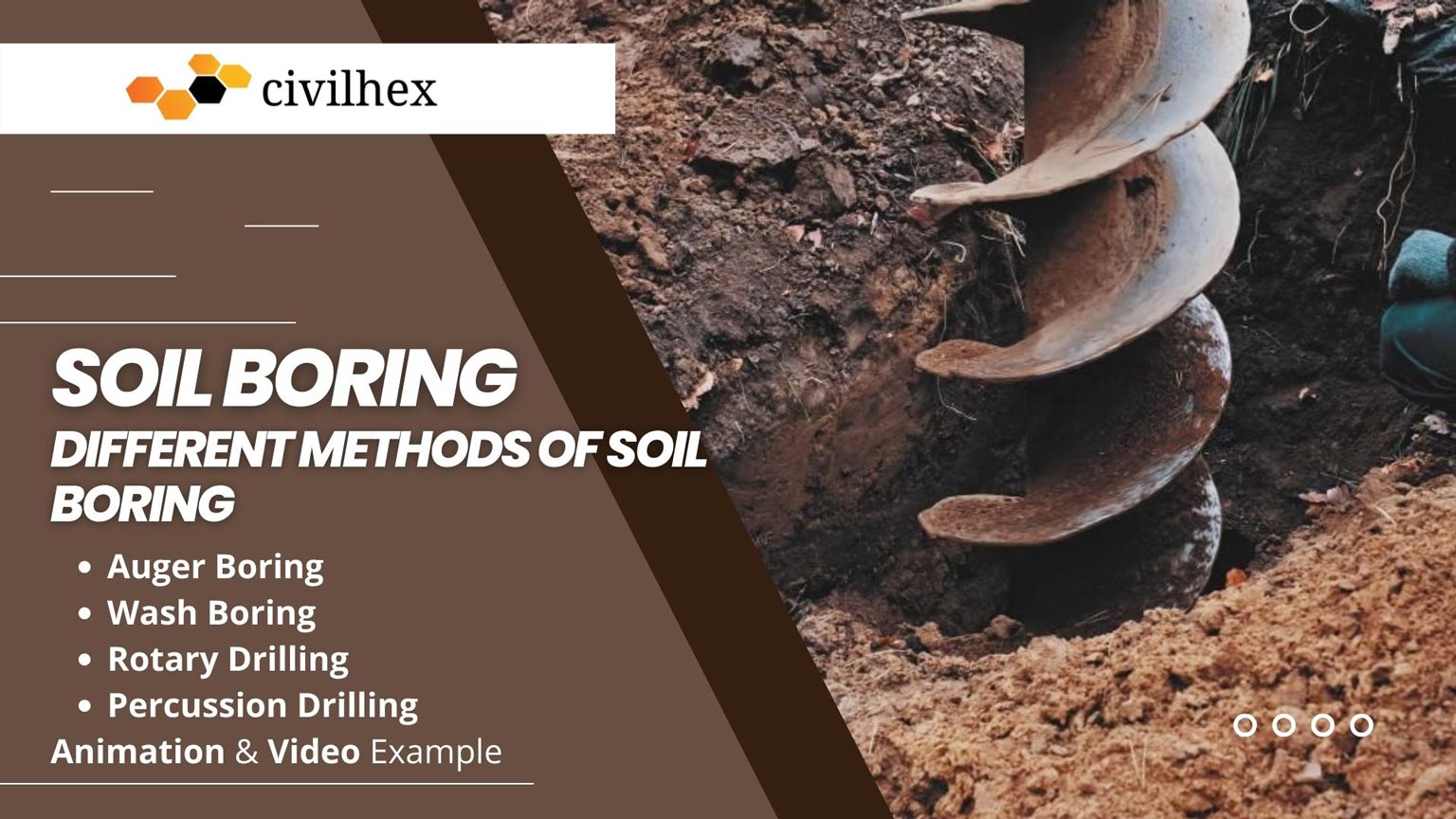
Soil boring is needed for every civil engineering project. Here we discuss soil boring types such as auger boring, wash boring, rotary drilling, and percussion drilling in detail, however also included auger types (Posthole auger, Helical auger, Continuous flight augers) and their sizes.
Soil boring is a major part of soil exploration. There are several soil boring methods available. This article discusses the most common soil boring methods used in the United States. There are four common methods of soil boring.
Types of Soil Boring
- Auger Boring
- Wash Boring
- Rotary Drilling
- Percussion Drilling
Auger Boring
Auger is a tool used for making boreholes effectively in soil. Sometimes is also called a drilling tool, wimbles, or gimlets in different states.
Auger boring is the easiest method of making exploratory boreholes. Regarding usability, there are three types of auger boring used in construction work:
- Posthole auger
- Helical auger
- Continuous-flight augers
Posthole Augers & Helical Augers
Posthole augers and helical augers are called hand augers because it’s operated by hand power. Hand augers cannot be used for making advanced boreholes. It can reach a maximum depth of 3 to 5 meters.
However, they can be used for soil exploration work on some small projects such as highways or small lightweight structures where more depth is not required.
For making deeper boreholes, portable power-driven helical augers are available, it’s also called earth auger powerheads. This augers diameter starts from 76mm up to 305mm.
Continuous-flight Augers
Continuous-flight augers are operated by machine power. When it comes to deep boring then this auger is the first choice. Truck or tractor-mounted drilling rigs supply power for drilling. This auger is usually used in flyovers, high-rise buildings, and different heavy construction projects where deep boring is required. This method can easily make 60m to 70m meter borehole.
Continuous-flight Augers are two types:
- Solid stem
- Hollow stem
Continuous-flight augers are available in sections of about 1m to 2m either a solid or hollow stem. Some of the commonly used solid augers outside diameters are listed here: 66.68m, 82.55m, 101.6m, and 114.3m.
Common commercially available hollow-stem augers inside and outside diameters are listed below the table.
Table 1: Hollow-stem augers inside and outside diameter
| Types | Inside diameter (mm) | Outside diameter (mm) |
|---|---|---|
| A | 63.50 mm | 158.75 mm |
| B | 69.85 mm | 177.80 mm |
| C | 76.20 mm | 203.20 mm |
| D | 85.55 mm | 280.60 mm |
A cutter head is attached to the auger tip. This cutter head is made of hard materials such as tungsten and carbide. During the drilling operation, the flights of the augers bring the loose soil from the bottom of the hole to the surface. when solid-stem augers are used for boring, it is necessary to remove solid-stem augers from holes at regular intervals in order to collect soil samples and perform other operations, such as standard penetration tests. However, Hollow stem augers have a distinct advantage over solid-stem augers in that they don’t need to be removed frequently for obtaining samples and tests. The outside of the hollow stem augers acts as a casing.
Hollow-stem augers section and component:
- Outer component:
- Hollow auger sections
- Hollow auger cap
- Drive cap
- Inner Component:
- Pilots assemble
- Center rod column
- Rod-to-cap adapter
The auger head contains replaceable carbide teeth, so if it is not working properly, you can change it easily. If soil samples are to be collected during drilling, the center rod and the pilot assembly are removed, and then the soil sampler is inserted through the hollow stem of the auger column and collected the soil sample.
See this video: The procedure of Continuous flight auger boring
Wash Boring
Wash boring is another advanced soil boring method in the United States. In this method, a steel casing about 2 to 3m long is driven into the ground and then the soil inside the steel casing is removed by using a chopping bit attached to a drilling rod.
Water is forced through the drilling rod and exists at a high velocity through the hole at the bottom of the chopping bit. The high-velocity water pushed upward the chopped soil particles and carried through the drill hole then overflow at the top of the casing through a T connection. The wash water is kept in a container by making hole in the ground a little distance from the borehole. Nowadays wash borings are rarely used in the United States and other developed countries.
See this video: The procedure of Wash Boring
Rotary Drilling
Rotary drilling is a procedure of soil boring by which continuously rotating drilling bits attached to the bottom of drilling rods cut and grind the soil and advance borehole. There are many types of drilling bits available in the market.
Rotary drilling can be used in sand, clay, and rocks-type soil. However, it is commonly used in sand and rock. Water or drilling mud is forced down the drilling rods to the bits and the return flow forces the soil particles to the surface.
By rotary drilling, boreholes with diameters of 50 to 203mm can easily be made. The drilling rod is raised and the drilling bit is replaced by a sampler when soil samples are needed. Rotary drilling with air is becoming more common for environmental drilling applications.
See this video: The procedure of Rotary Drilling
Percussion Drilling
Percussion drilling is an alternative advanced boring method used in North America and Worldwide. This method is usually used in very stiff soil and rock, where auger and wash boring are not suitable.
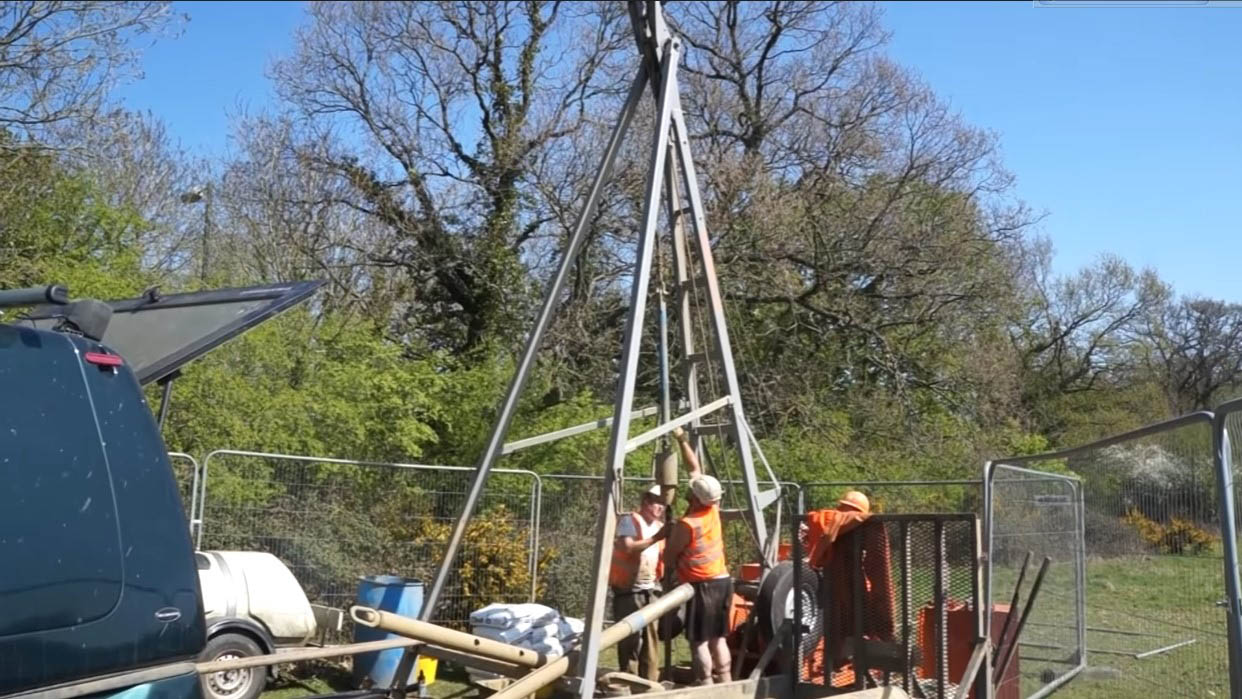
A heavy cutting or hammering bit is attached to a rope or cable that is alternatively lifting and dropping lowered into an open hole, sometimes a hollow steel casing is used to prevent the loss of drilling fluid through the borehole. A tripod is used to support the cable and give stability when lifting. The major disadvantage of this method is that it cannot be capable to get a good quality undisturbed soil sample.
See this video: The procedure of Percussion drilling
Reference
Principles of Foundation Engineering (Ninth edition, 2019), “Braja M. Das, University Sacramento”, “Nagaratnam Sivakugan, College of Science & Engineering James Cook University”
If you like this article and got the information that you looking for. Join our social media and message us about how we can improve our site and what you want to learn next.
Download this article as a pdf:
See more articles:
- Learn All About Rebar-Rebar Sizes, Grade, and Types
- Sprinkler Irrigation Systems -Types of sprinkler
FAQ
What is soil boring?
Soil borings are drilled into the ground to determine the nature and stratification of the soil.
Where to buy soil boring machine?
It depends on how deep you want to drill and what kind of project you want to use it. However, if you want to use it for basic work like gardening or taking soil samples within 3 to 5m depth, you can buy augers from online shop like amazon.
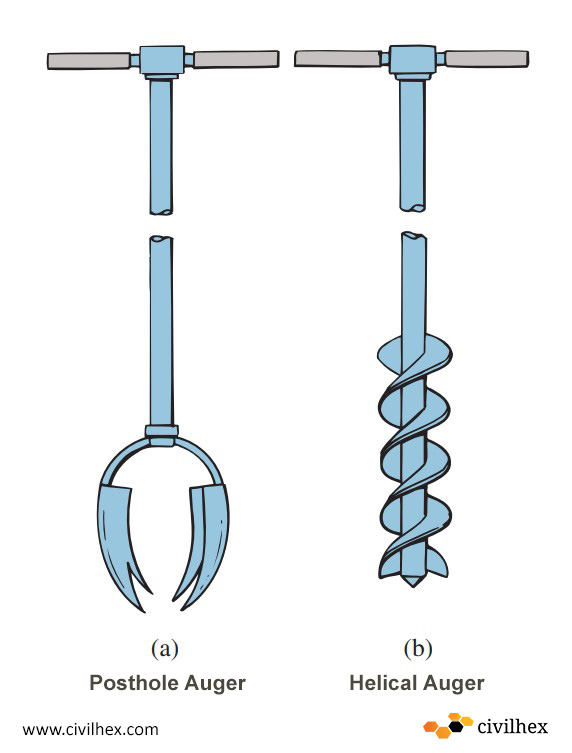
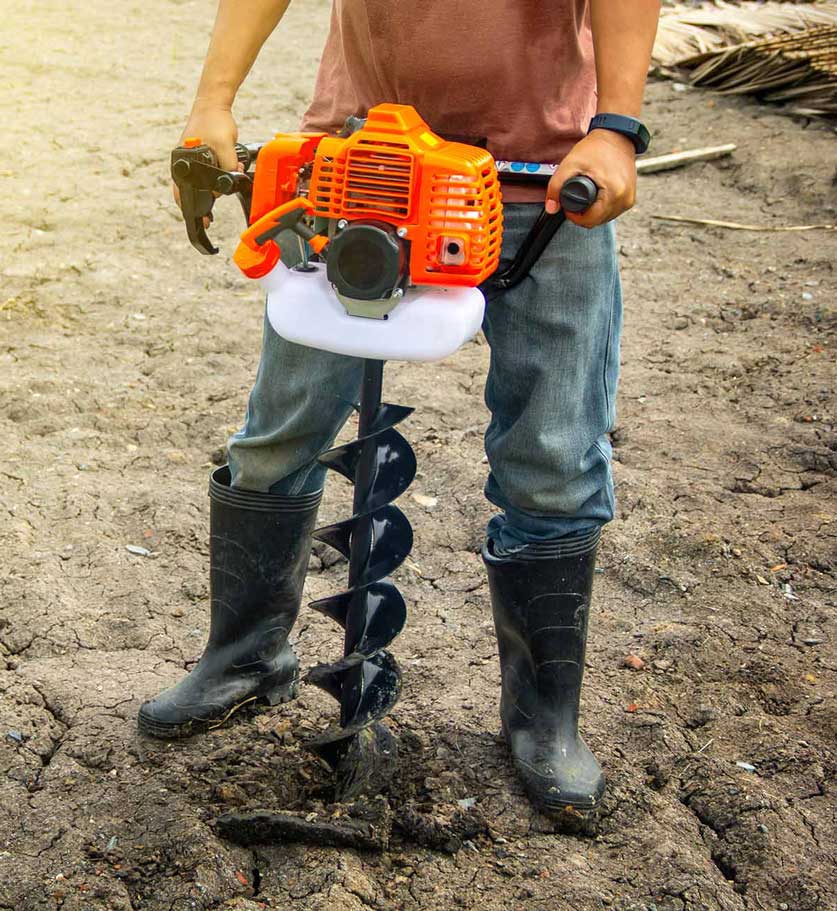

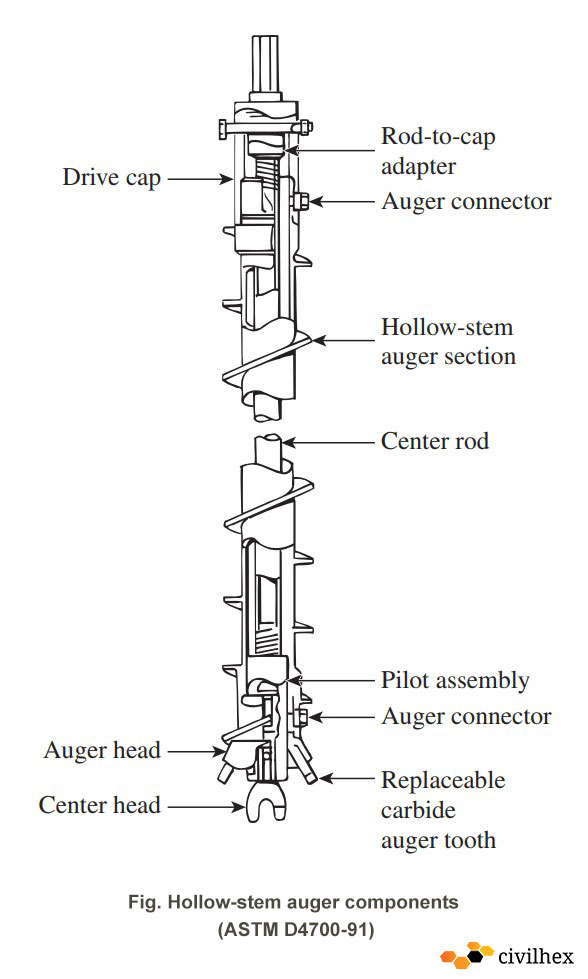
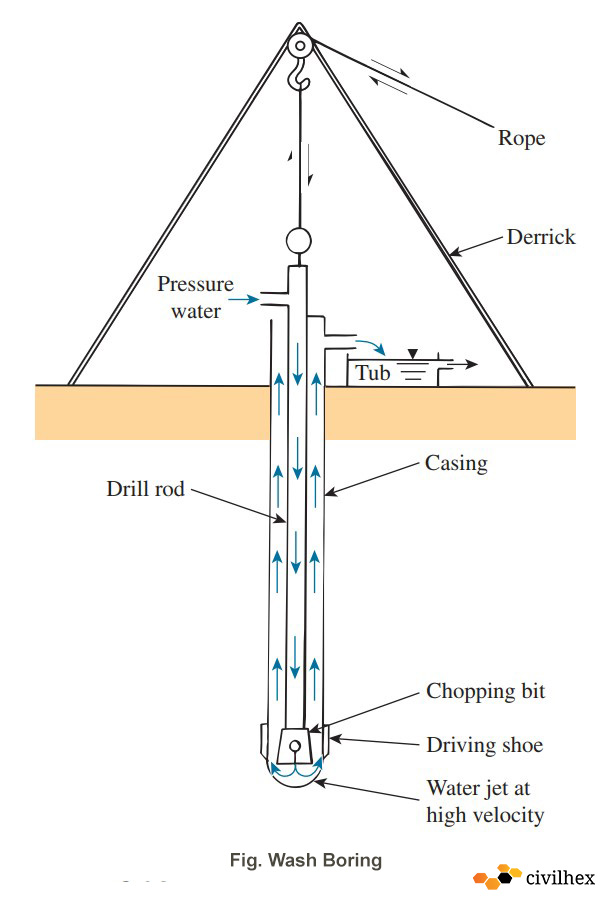
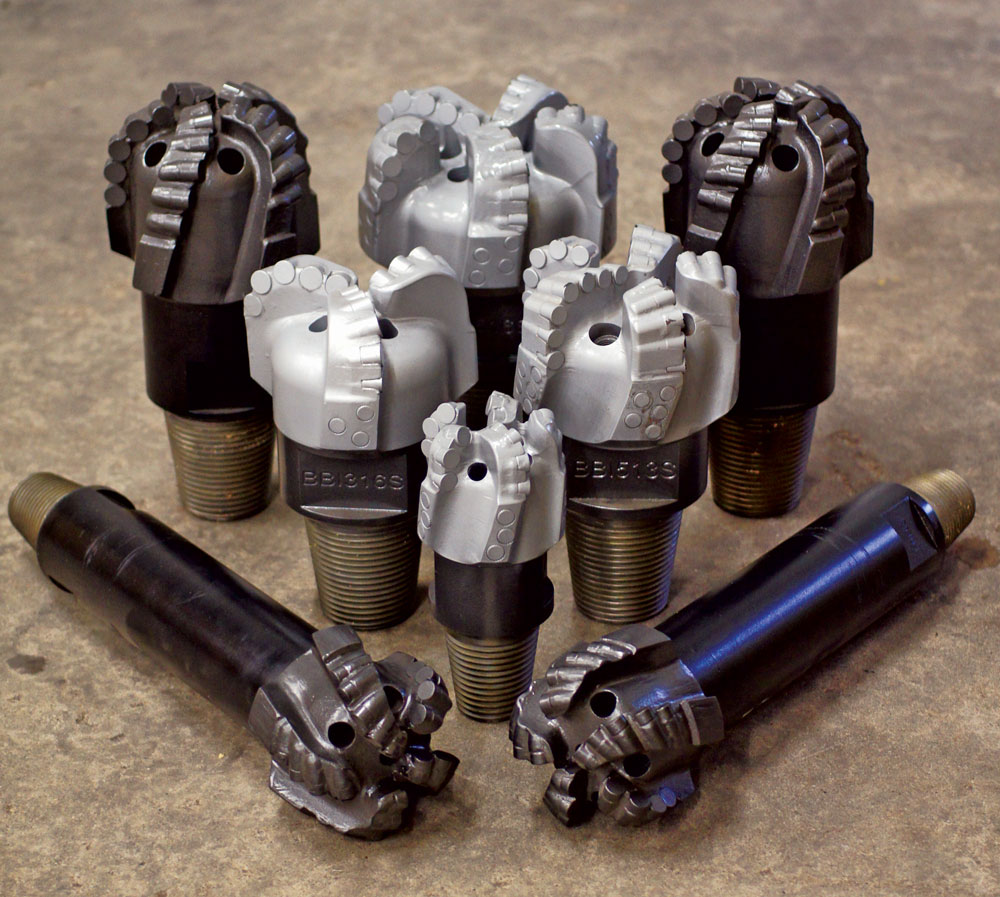





Responses